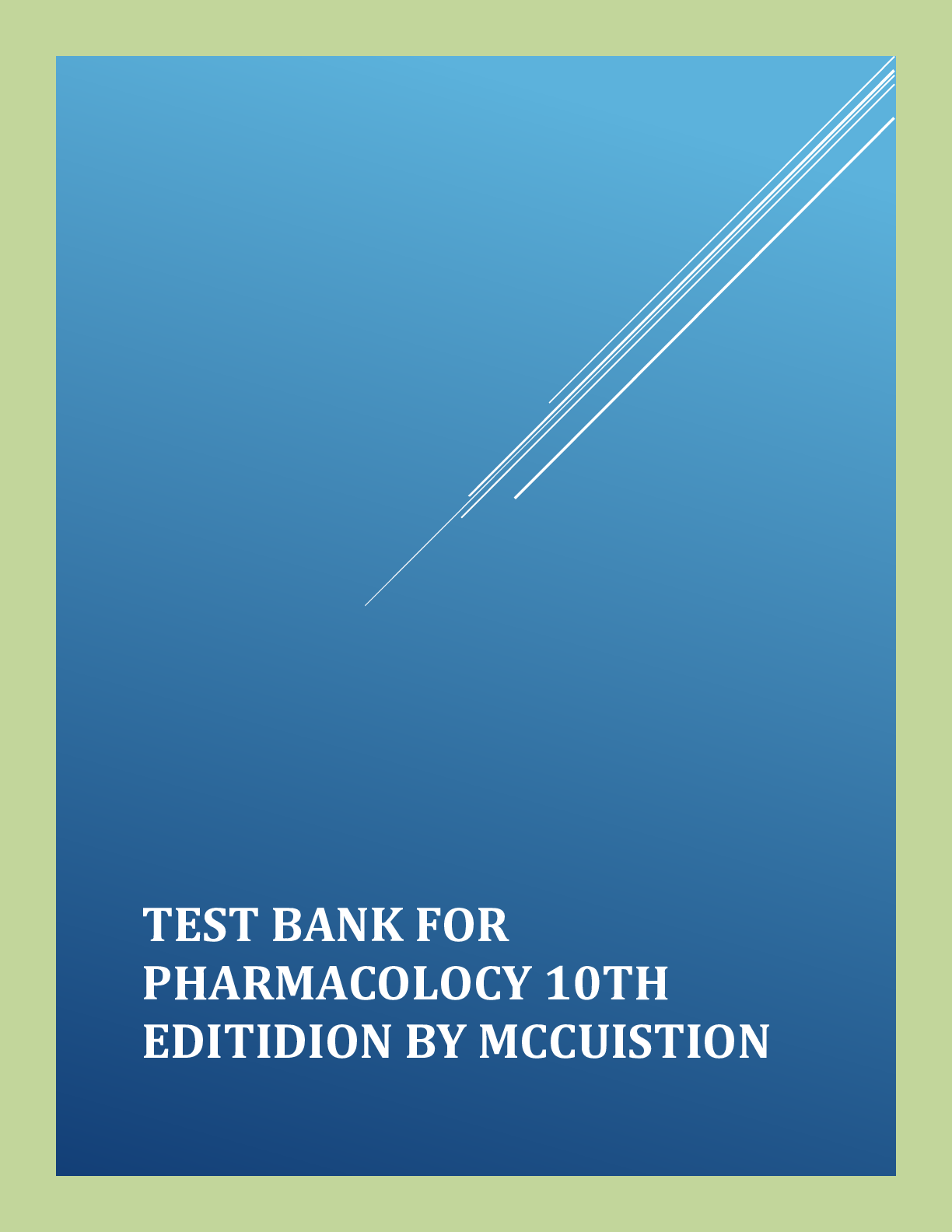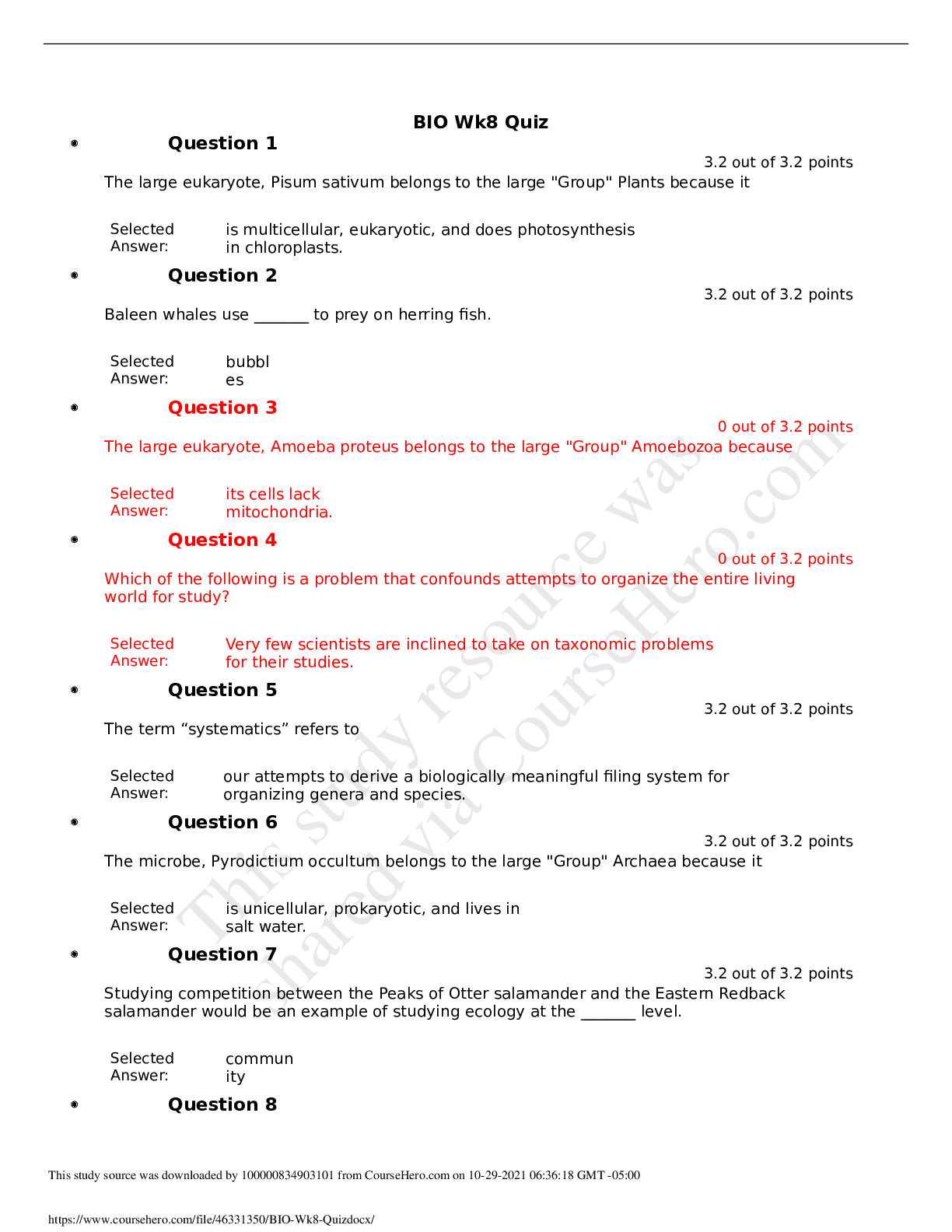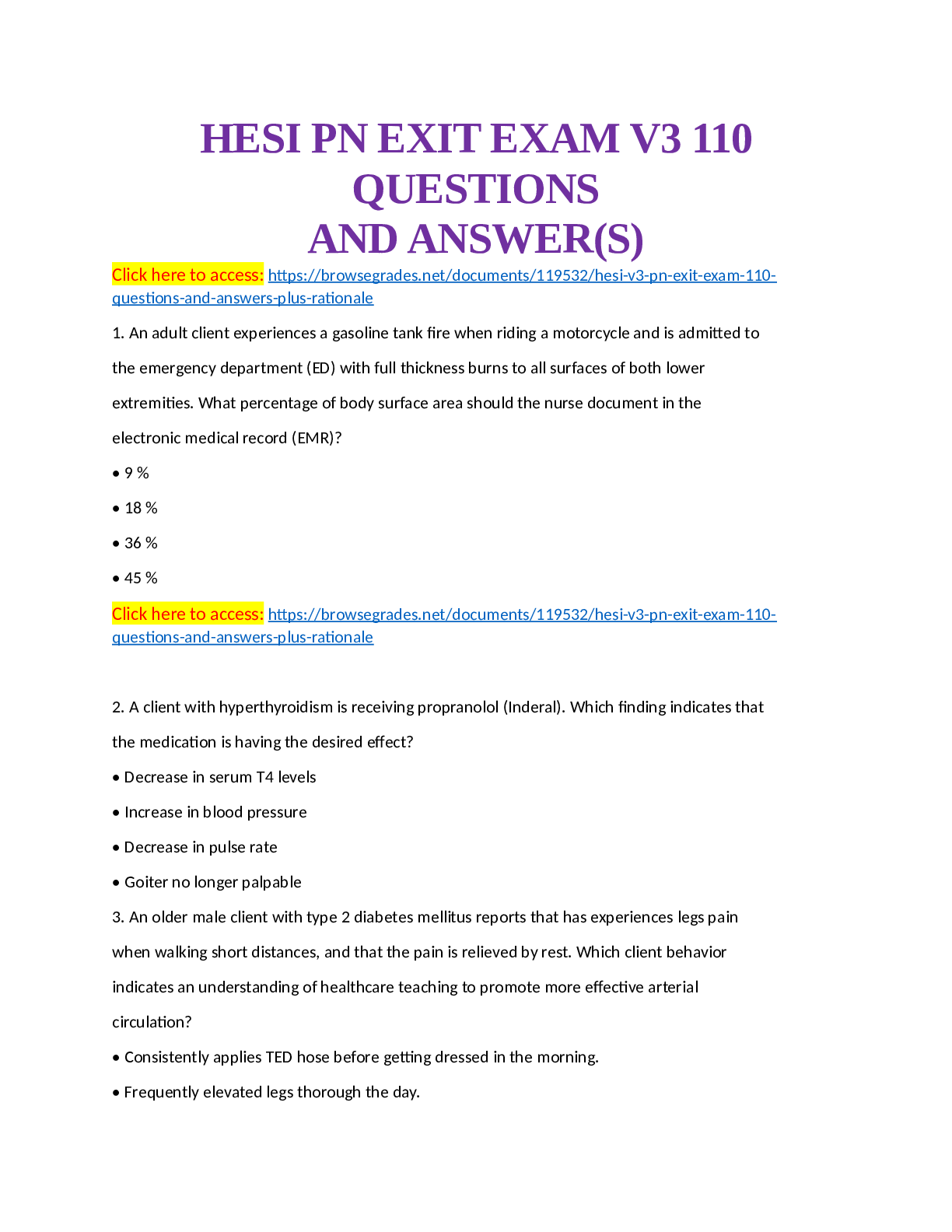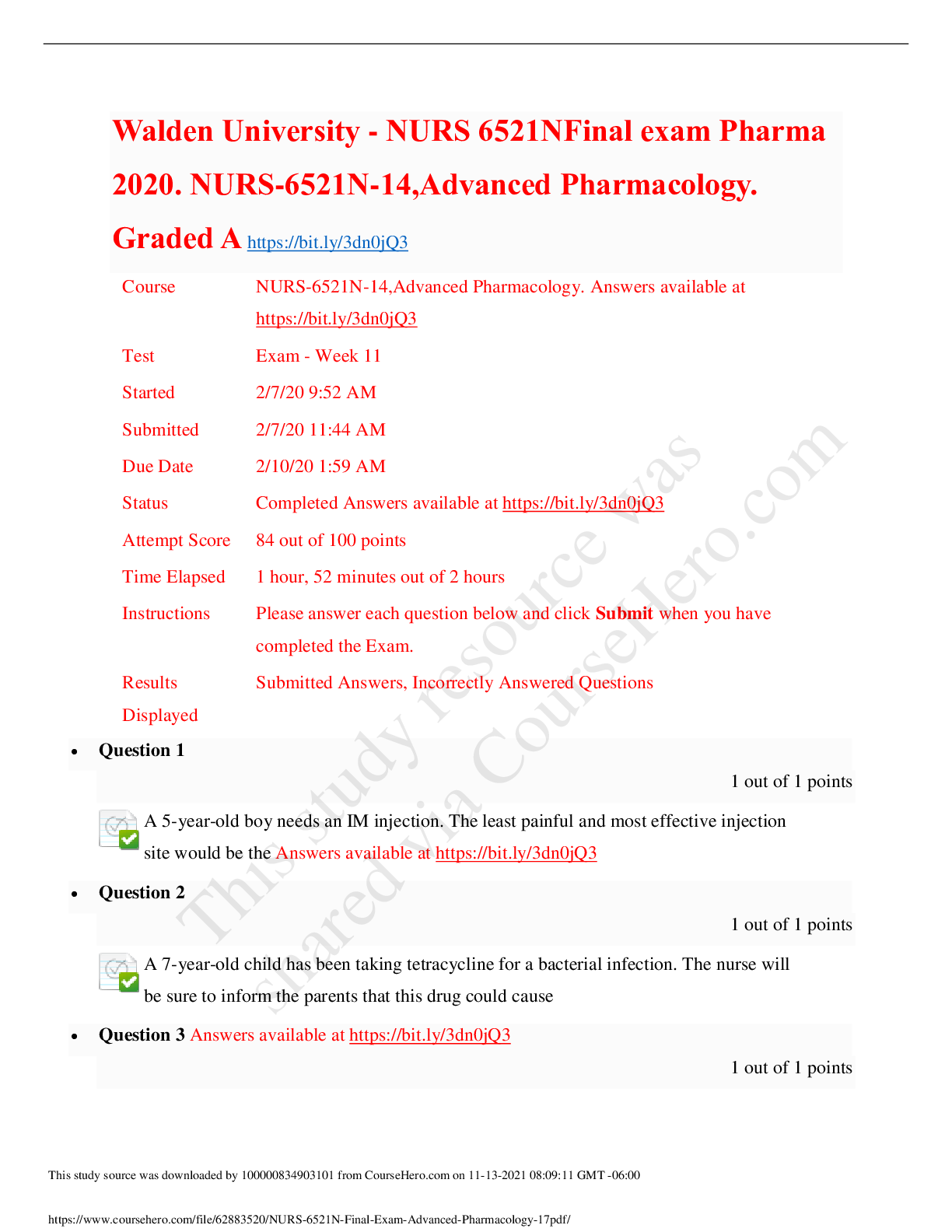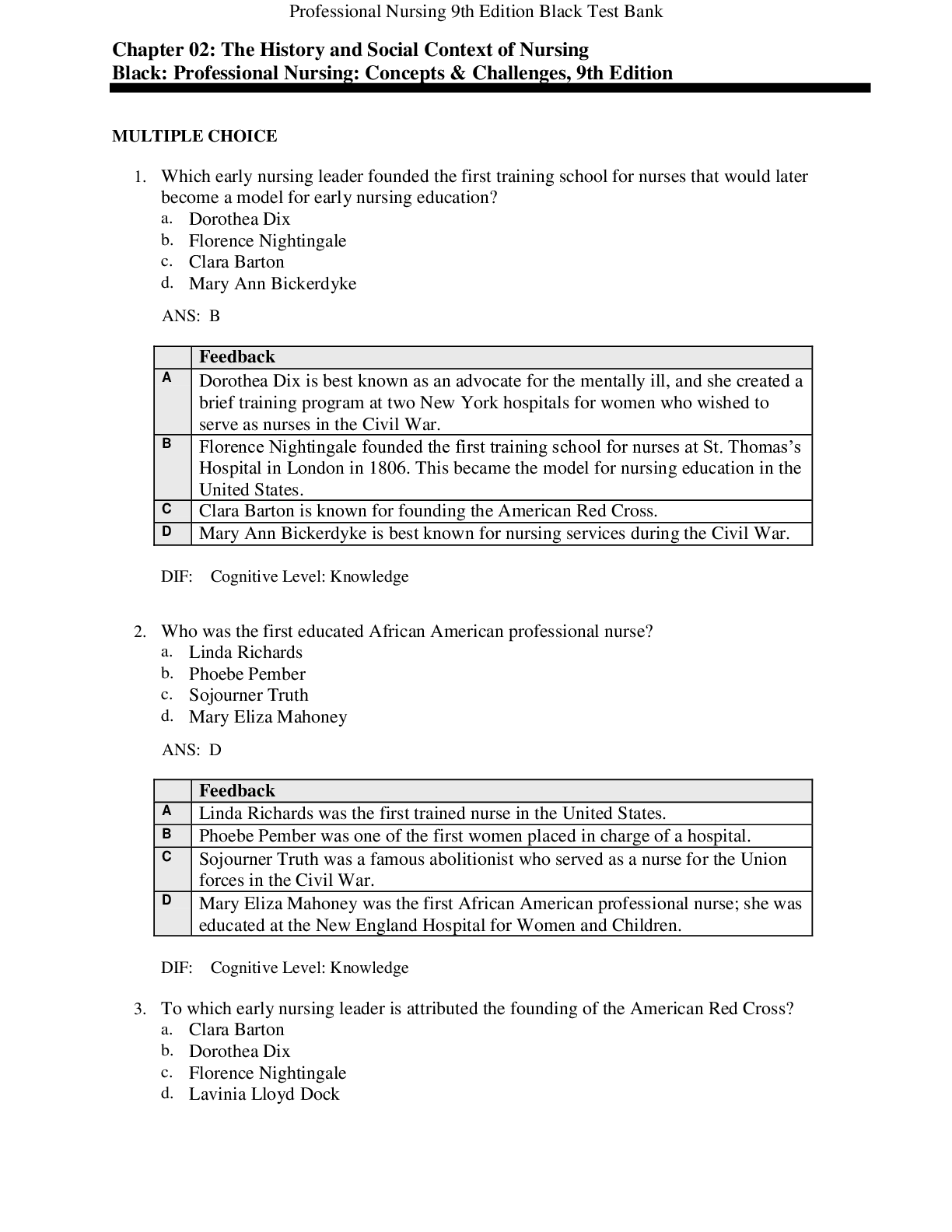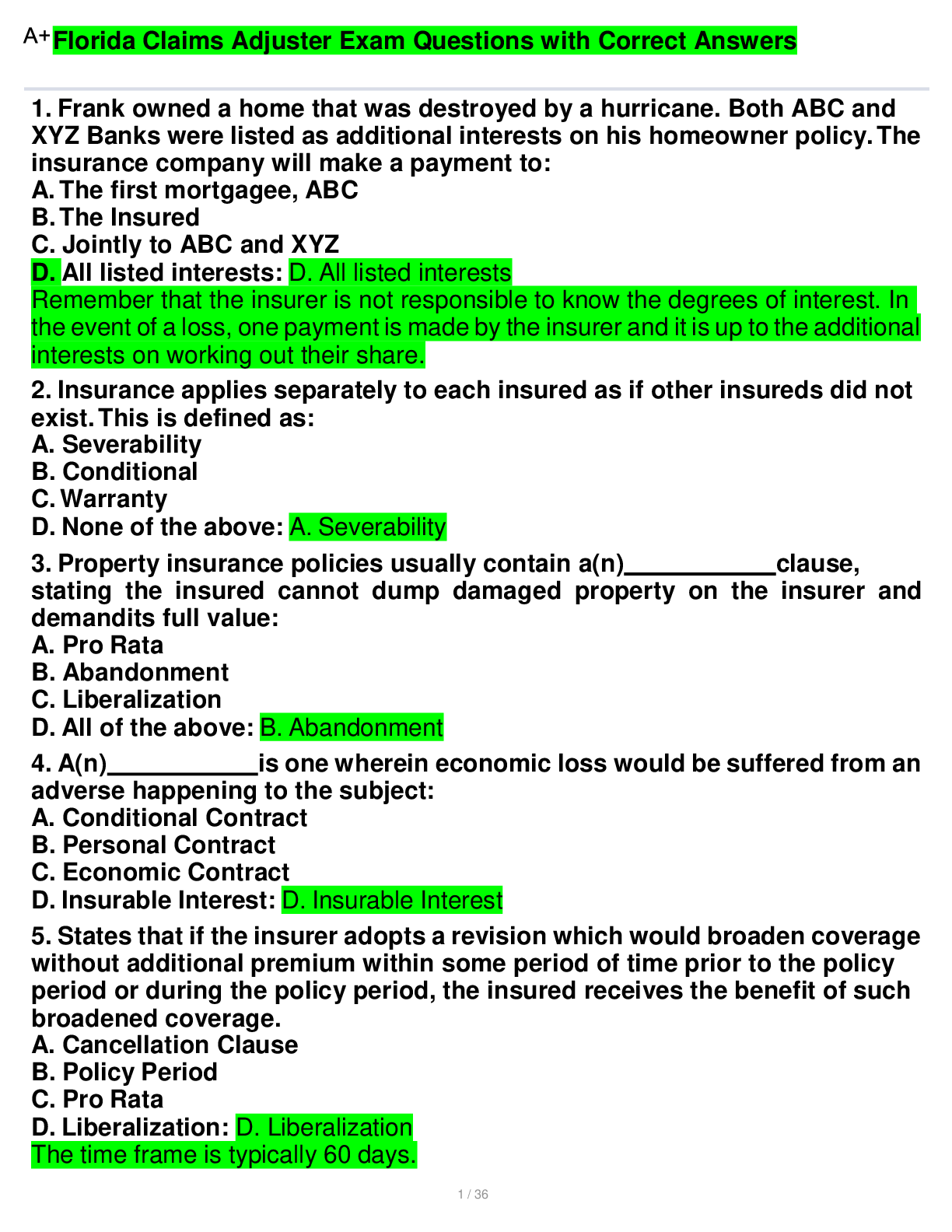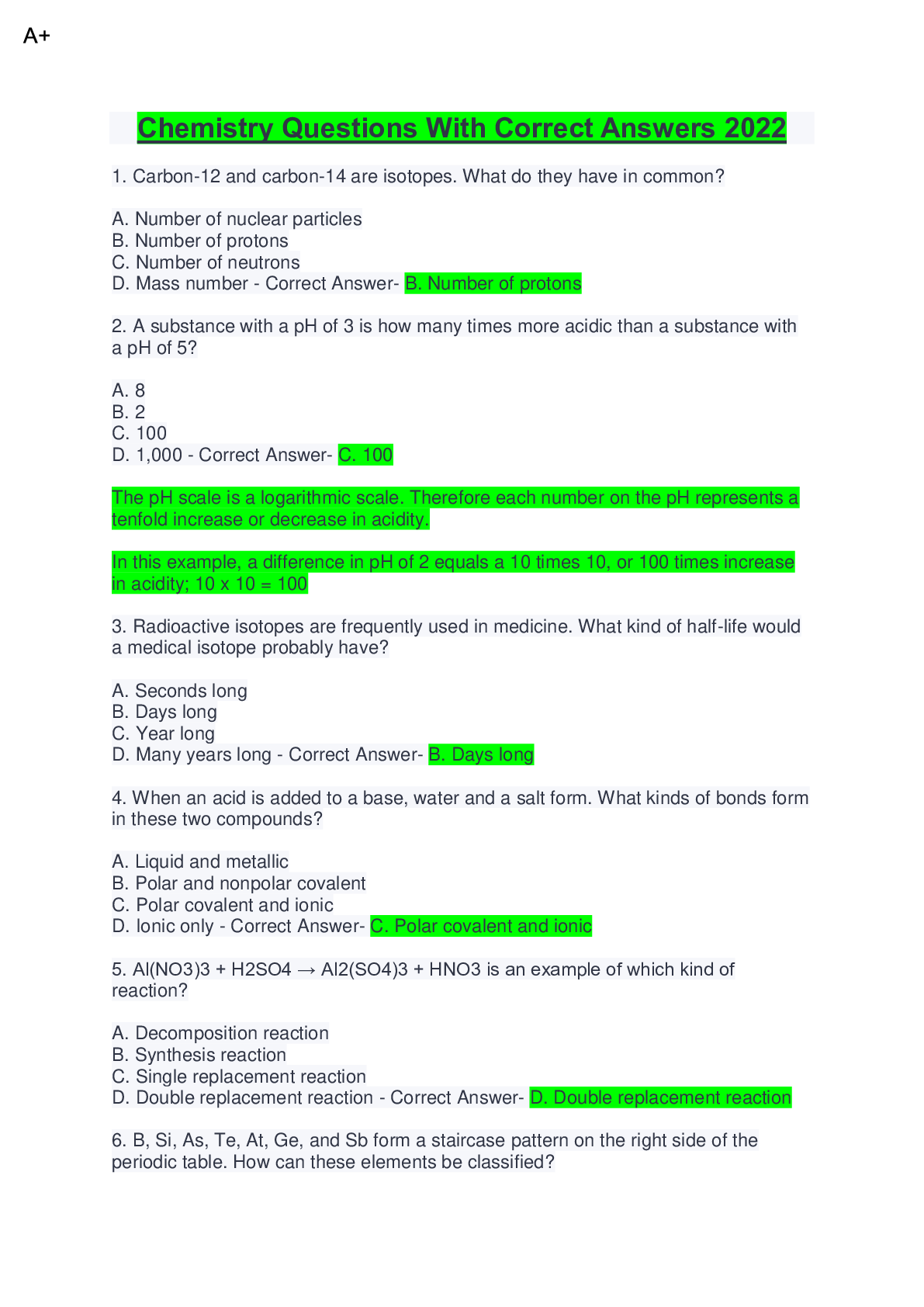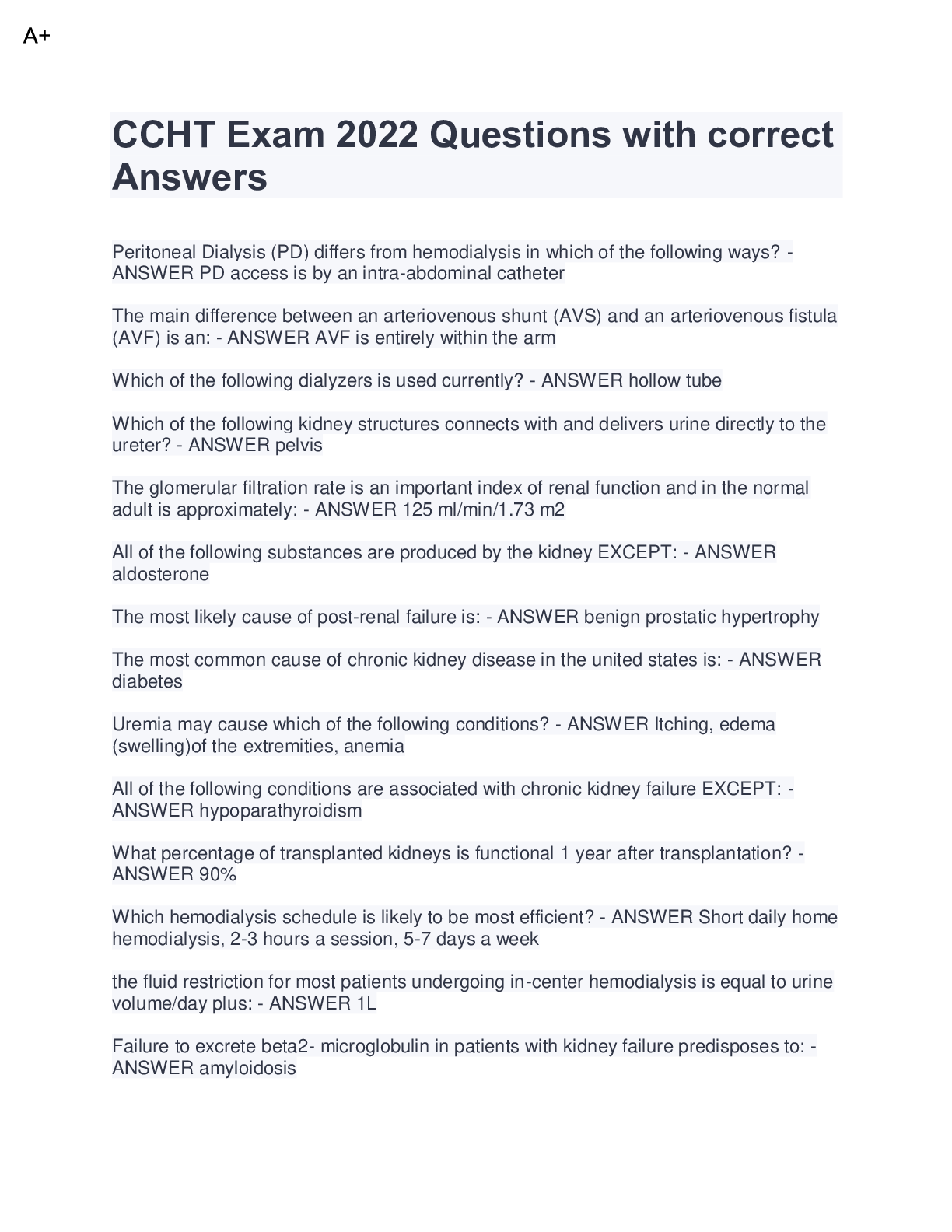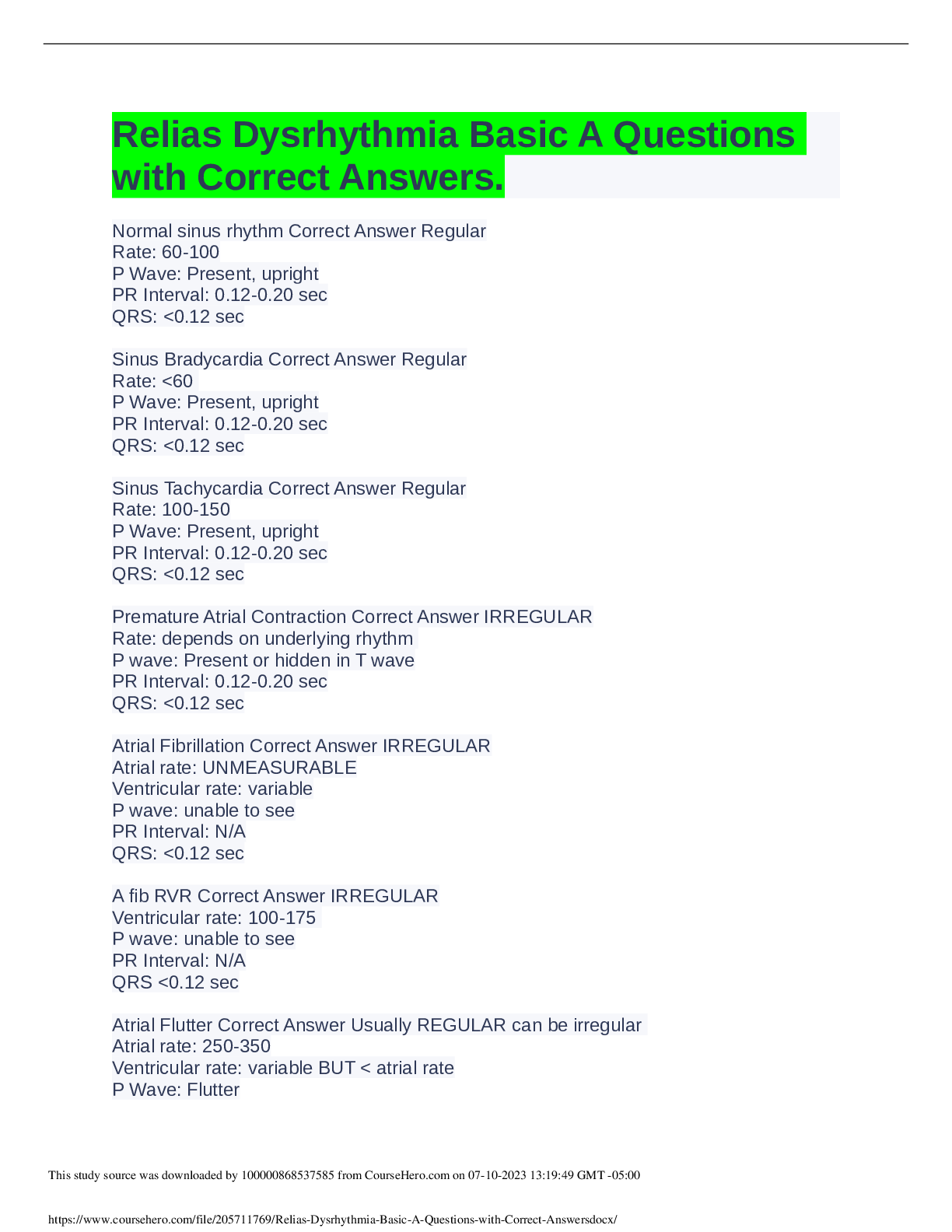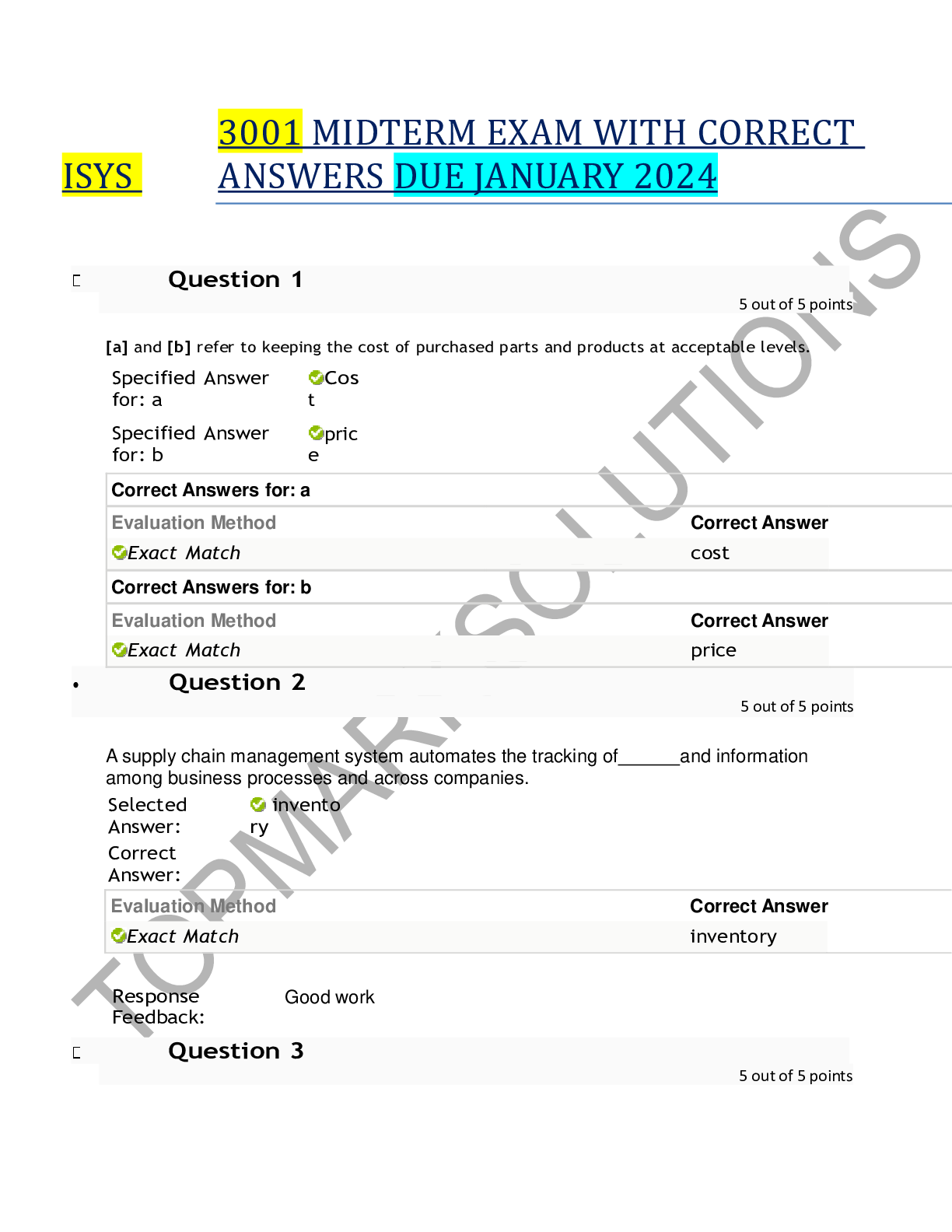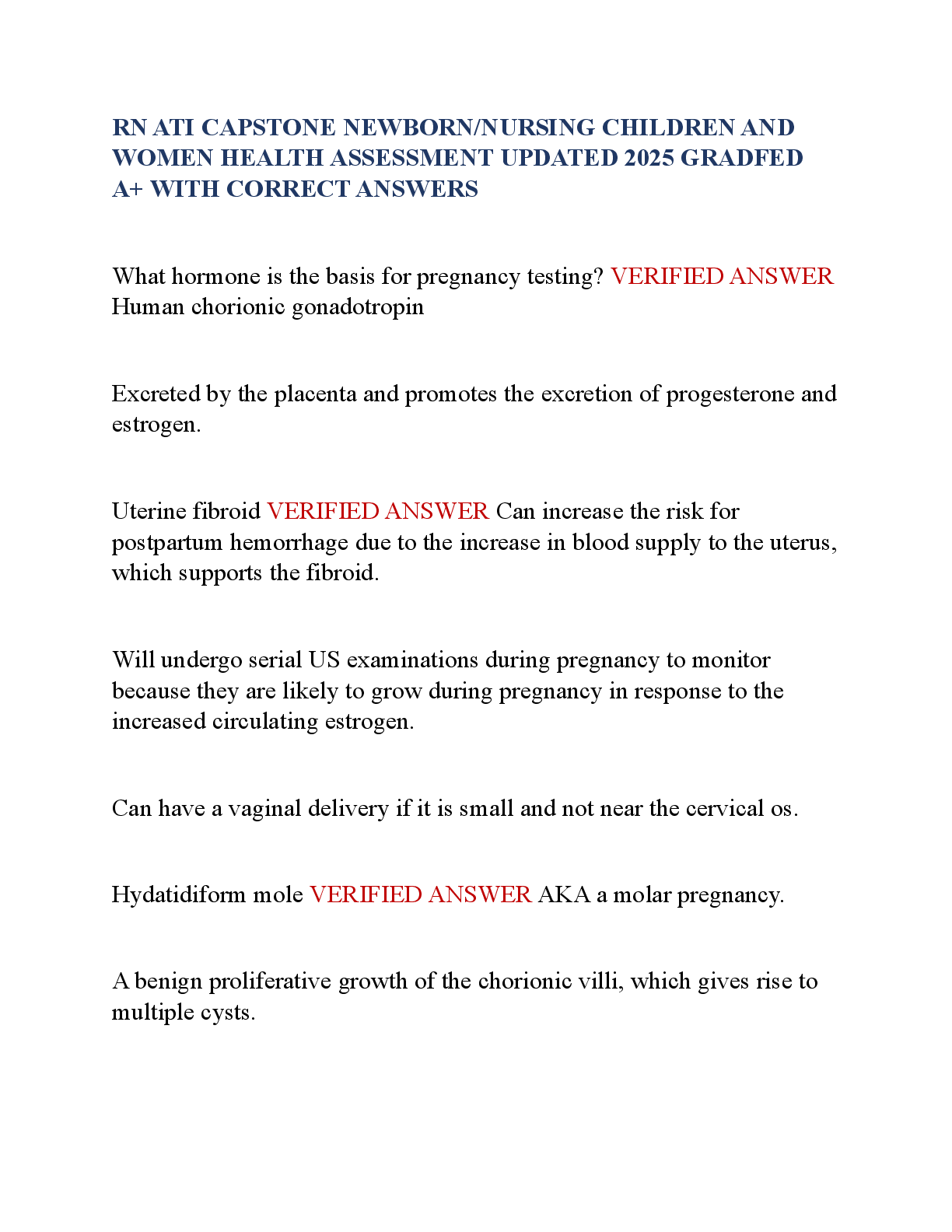*NURSING > AQA QUESTION and MARK SCHEMES > Dysrhythmias Questions With Correct Answers (All)
Dysrhythmias Questions With Correct Answers
Document Content and Description Below
Dysrhythmias Questions With Correct AnswersTo determine whether there is a delay in impulse conduction through the ventricles, the nurse will measure the duration of the patient's a. P wave. c. PR i... nterval. b. Q wave. d. QRS complex. - ANS: D The QRS complex represents ventricular depolarization. The P wave represents the depolarization of the atria. The PR interval represents depolarization of the atria, atrioventricular node, bundle of His, bundle branches, and the Purkinje fibers. The Q wave is the first negative deflection following the P wave and should be narrow and short. The nurse needs to quickly estimate the heart rate for a patient with a regular heart rhythm. Which method will be best to use? a. Count the number of large squares in the R-R interval and divide by 300. b. Print a 1-minute electrocardiogram (ECG) strip and count the number of QRS complexes. c. Use the 3-second markers to count the number of QRS complexes in 6 seconds and multiply by 10. d. Calculate the number of small squares between one QRS complex and the next and divide into 1500. - ANS: C This is the quickest way to determine the ventricular rate for a patient with a regular rhythm. All the other methods are accurate, but take longer. A patient has a junctional escape rhythm on the monitor. The nurse will expect the patient to have a heart rate of _____ beats/min. a. 15 to 20 c. 40 to 60 b. 20 to 40 d. 60 to 100 - ANS: C If the sinoatrial (SA) node fails to discharge, the atrioventricular (AV) node will automatically discharge at the normal rate of 40 to 60 beats/minute. The slower rates are typical of the bundle of His and Purkinje system and may be seen with failure of both the SA and AV node to discharge. The normal SA node rate is 60 to 100 beats/min. The nurse obtains a rhythm strip on a patient who has had a myocardial infarction and makes the following analysis: no visible P waves, PR interval not measurable, ventricular rate of 162, R-R interval regular, and QRS complex wide and distorted, and QRS duration of 0.18 second. The nurse interprets the patient's cardiac rhythm as a. atrial flutter. c. ventricular fibrillation. b. sinus tachycardia. d. ventricular tachycardia. - ANS: D The absence of P waves, wide QRS, rate greater than 150 beats/min, and the regularity of the rhythm indicate ventricular tachycardia. Atrial flutter is usually regular, has a narrow QRS configuration, and has flutter waves present representing atrial activity. Sinus tachycardia has P waves. Ventricular fibrillation is irregular and does not have a consistent QRS duration. The nurse notes that a patient's heart monitor shows that every other beat is earlier than expected, has no visible P wave, and has a QRS complex that is wide and bizarre in shape. How will the nurse document the rhythm? [Show More]
Last updated: 2 years ago
Preview 1 out of 8 pages
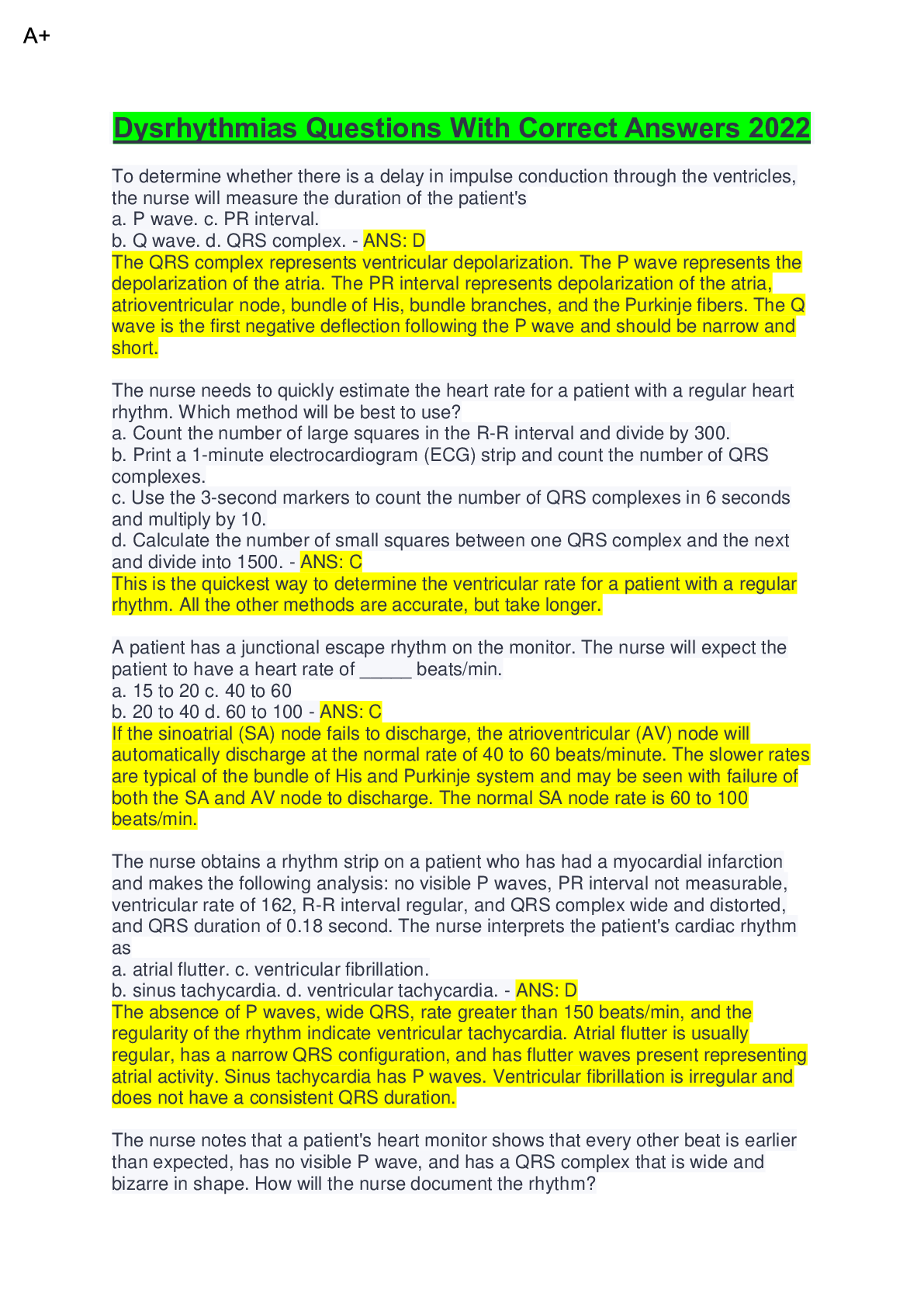
Buy this document to get the full access instantly
Instant Download Access after purchase
Buy NowInstant download
We Accept:

Reviews( 0 )
$4.50
Can't find what you want? Try our AI powered Search
Document information
Connected school, study & course
About the document
Uploaded On
Apr 05, 2023
Number of pages
8
Written in
Additional information
This document has been written for:
Uploaded
Apr 05, 2023
Downloads
0
Views
100

